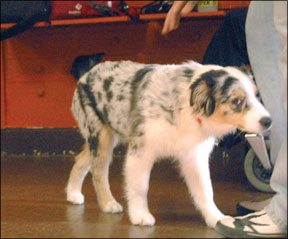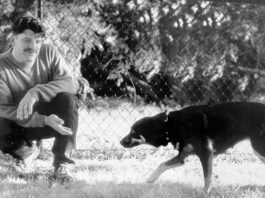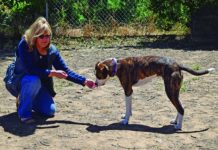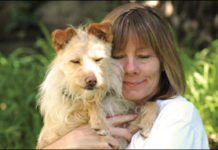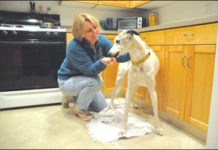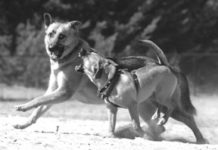What Different Dog Barks Mean
While dogs are primarily body language communicators, they also use their voices to share information with other members of their social group. Compared to their wild brethren, however, our domesticated dogs use their voices far more a tendency we have genetically encouraged. We've created herding breeds, including Shelties, Border Collies, Welsh Corgis, and others, who use their voices when necessary to control their flocks. We've bred scent hounds to give voice when they are on the trail of prey.
Teach Your Dog to Make Eye Contact
If your dog doesn't already know the value of eye contact with humans, you can easily teach her. This is an operant conditioning/positive reinforcement exercise your dog learns her behavior can make good stuff happen. When your dog has come to realize the value of eye contact, she will sometimes offer the behavior without being cued. Be sure to reinforce offered eye contact as well as cued eye contact. To help her be comfortable with eye contact from other humans, ask your friends to play the Watch" game with her as well."
Dogs are Body Language Communicators
Dogs are, first and foremost, body language communicators. While they do have a limited ability to communicate vocally, they are much more articulate with their subtle body movements, and much more intuitively able to understand ours. As Patricia McConnell says in the introduction of her excellent book, The Other End of the Leash, All dogs are brilliant at perceiving the slightest movement that we make
Listening to Your Dog’s Body Signals
The dog training world has become exponentially more aware of the significance of dog body language communication over the past two decades. We know how critically important it is in keeping dogs and people safe, and in building relationships of mutual trust and respect that result in lifelong bonds between canines and their humans. And yet we still see training and behavior professionals as well as regular dog owners who utterly fail to understand what their dogs are desperately trying to say to them.
A Dog’s Calming Signals
Pups who are raised in a litter for the first eight weeks of their lives (and in the presence of older dogs) have the advantage of learning skills from their siblings and elders. They learn to accept the leadership of a just leader. They learn simple, but crucially important lessons such as bite inhibition. They come to understand when play is too rough or inappropriate. And they have the opportunity to learn the language skills that will enable them to be peaceful pack members.
How Can You Know What Your Dog is Feeling?
Dog body language can be quite difficult to read, so it's important to consider the context when interpreting behavior. Not only do you need to consider the environment (for example, dogs will pant when they're hot, but also when they're stressed), you also need to look at all of the body parts together. Although many people attempt to correlate each type of movement with a specific emotion, the easier approach is simply to compare the overall pictures of a distressed dog to a happy dog.
It’s Not Your Imagination: Dogs Do Mimic Their Owners
Behavioral scientists have long questioned whether dogs are capable of mimicking each other or people. A recent study published in the Proceedings of the Royal Society B: Biological Sciences has shown that dogs are not only capable of mimicking their owners, they do so automatically. In fact, their drive to copy our head and hand (paw) movements is so strong that they tend to do so even when it is not in their best interests.
Learn to Read Your Dog’s Body Signals
How many times have I heard a dog owner say, If only they could speak!" And how many times have I bitten back my first retort: "But they can speak! You're just not listening!" We humans are a verbal species. We long for our beloved canine companions to speak to us in words we can easily understand. While they have some capacity for vocal communication
Eye Contact in Dog Training
It's really not natural for dogs to offer direct and prolonged eye contact. In the dog world, direct eye contact is a threat, and the appropriate response to a direct stare is to look away as a deference or appeasement behavior (I'm not challenging you/please don't hurt me!"). In many human cultures
Maintaining Healthy Physical Contact with Your Dog
Have you ever stopped to think about how many times a day you do something to your dog that involves physical contact? I’m not talking about petting him when he nudges up against your leg; I’m talking about grasping his collar, putting his leash on, picking him up, wiping debris from the corners of his eyes, wiping the mud off his paws, trimming fur somewhere on his body, and many more “husbandry” procedures that require various degrees of restraint and touch. Chances are you really only think about it when your dog protests, but chances are he thinks about it every time you reach for him.
Unsticking Myths About Dogs
apprehensive
Understanding How Your Dog Communicates
the camera captures a scary expression of aggression that wasn't easily visible to the observer on the ground."


